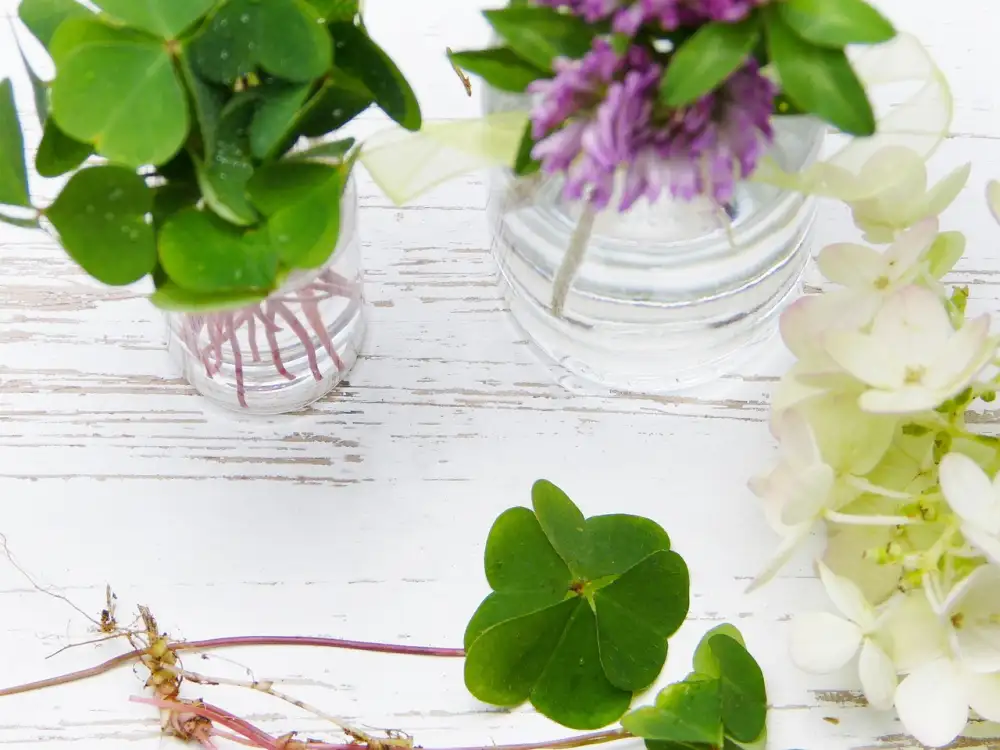Mastering Hydrangea Care: Your Essential Guide to Stunning Home Gardens

- Choosing the Right Location for Hydrangeas
- Planting Hydrangeas: Step-by-Step Guide
- Watering Hydrangeas: Dos and Don'ts
- Fertilizing Hydrangeas: Best Practices
- Pruning Hydrangeas: Tips for Healthy Growth
- Protecting Hydrangeas from Pests and Diseases
- Winter Care for Hydrangeas: Preparing for the Cold Season
- Troubleshooting Common Hydrangea Problems
Hydrangeas are stunning flowering plants that can add a touch of elegance to any home garden. With their large, vibrant blooms and lush foliage, they are truly a sight to behold. However, caring for hydrangeas can be a bit challenging if you're not familiar with their specific needs. In this essential guide, we will walk you through the basics of hydrangea care, from choosing the right location to troubleshooting common problems. By following these tips and techniques, you'll be able to create a stunning garden filled with beautiful and healthy hydrangeas. So let's dive in and discover the secrets to mastering hydrangea care!
Choosing the Right Location for Hydrangeas
Choosing the right location for hydrangeas is crucial for their growth and overall health. These beautiful flowering plants thrive in areas with partial shade, receiving at least 4-6 hours of sunlight each day. Avoid planting them in full sun as it can lead to wilting and scorching of the leaves. Additionally, choose a spot with well-draining soil to prevent waterlogged roots. Hydrangeas also prefer sheltered areas away from strong winds that can damage their delicate blooms. By selecting the perfect location, you are setting the stage for stunning hydrangea displays in your home garden.
Planting Hydrangeas: Step-by-Step Guide
When it comes to planting hydrangeas, following a step-by-step guide is essential for success. Start by selecting a location that offers partial shade and well-draining soil. Dig a hole twice the size of the root ball and loosen the soil at the bottom. Place the hydrangea in the hole, making sure it sits at the same level as it did in its previous container. Backfill with soil, gently firming it around the plant. Water thoroughly and add a layer of mulch to retain moisture. Regularly water and monitor for any signs of stress or disease. With proper planting techniques, your hydrangeas will thrive and bring beauty to your home garden.
Watering Hydrangeas: Dos and Don'ts
When it comes to watering hydrangeas, there are a few key dos and don'ts to keep in mind. Firstly, do ensure that your hydrangeas receive an adequate amount of water. These plants have shallow roots, so they require consistent moisture. However, be cautious not to overwater them as this can lead to root rot.
Another important tip is to water the base of the plant rather than the leaves. Wet foliage can promote the growth of diseases and pests. Additionally, it's best to water hydrangeas in the morning or early afternoon, allowing time for any excess moisture on the leaves to dry before nightfall.
Avoid using sprinklers or overhead watering systems as these can cause fungal diseases. Instead, opt for a drip irrigation system or hand-watering at the base of the plant. This will ensure that the water reaches the roots without wetting the foliage excessively.
Remember that different types of hydrangeas have different water requirements. For example, while mophead hydrangeas prefer consistently moist soil, panicle hydrangeas are more tolerant of drier conditions. It's essential to understand the specific needs of your hydrangea variety and adjust your watering routine accordingly.
By following these dos and don'ts when watering your hydrangeas, you'll help maintain their health and beauty throughout the growing season.
Fertilizing Hydrangeas: Best Practices
Proper fertilization is crucial for the healthy growth and vibrant blooms of hydrangeas. Here are some best practices to follow:
1. Timing: Fertilize hydrangeas in early spring, just as new growth begins. Avoid fertilizing late in the season, as it may encourage tender growth that can be damaged by frost.
2. Balanced Formula: Choose a balanced fertilizer with equal amounts of nitrogen (N), phosphorus (P), and potassium (K). Look for a ratio like 10-10-10 or 14-14-14.
3. Slow Release: Opt for slow-release granular fertilizers to provide a steady supply of nutrients over time. This ensures continuous nourishment without the risk of overfeeding.
4. Application Method: Sprinkle the fertilizer evenly around the base of the plant, avoiding direct contact with leaves or stems. Gently work it into the soil surface and water thoroughly.
5. Quantity: Follow the instructions on the fertilizer package for recommended dosage based on your hydrangea's size and age. Over-fertilizing can lead to excessive foliage growth at the expense of flowers.
6. Frequency: For established hydrangeas, one application in early spring is usually sufficient. However, if your plants show signs of nutrient deficiency, you can apply a second dose in midsummer.
Remember, moderation is key when it comes to fertilizing hydrangeas. Too much fertilizer can cause leaf burn or even kill the plant. By following these best practices, you'll ensure your hydrangeas receive the right amount of nutrients for stunning blooms all season long.
Pruning Hydrangeas: Tips for Healthy Growth
Pruning hydrangeas is essential for maintaining healthy growth and promoting abundant blooms. Here are some tips to help you master the art of pruning:
1. Timing: The best time to prune hydrangeas depends on the type you have. For most varieties, it's recommended to prune in late winter or early spring before new growth appears.
2. Remove dead wood: Start by cutting out any dead or damaged branches. This will improve the overall appearance of the plant and prevent diseases from spreading.
3. Shape and size: Prune back overgrown branches to maintain a desired shape and size. Cut just above a set of healthy buds to encourage new growth.
4. Blooming types: Different hydrangea varieties bloom on old or new wood. If your hydrangea blooms on old wood (last year's growth), avoid pruning too heavily as this can reduce flowering.
5. Deadheading: To prolong blooming, remove faded flowers by cutting them back to a pair of healthy buds or a strong lateral branch.
Remember, each hydrangea variety may have specific pruning requirements, so it's important to research and understand your specific plant's needs. With proper pruning, you can ensure healthy growth and enjoy stunning blooms all season long!
Protecting Hydrangeas from Pests and Diseases
To ensure the health and beauty of your hydrangeas, it is crucial to protect them from pests and diseases. Here are some tips to keep these unwanted visitors at bay:
1. Regularly inspect your plants for any signs of pests such as aphids, spider mites, or snails. If you spot any, take immediate action to control their population.
2. Use organic insecticides or homemade remedies like neem oil or a mixture of water and dish soap to deter pests without harming the environment.
3. Avoid overwatering your hydrangeas as this can create a damp environment that attracts fungal diseases like powdery mildew or leaf spot. Ensure proper drainage to prevent waterlogging.
4. Mulch around the base of your plants with organic materials like wood chips or compost. This helps retain moisture while preventing weed growth that can compete with hydrangeas for nutrients.
5. Prune dead or diseased branches regularly to promote airflow and reduce the risk of fungal infections.
By following these preventive measures, you can safeguard your hydrangeas against common pests and diseases, ensuring they thrive in your garden for years to come.
Winter Care for Hydrangeas: Preparing for the Cold Season
As the cold weather approaches, it is essential to take proper care of your hydrangeas to ensure their survival and health during the winter months. Here are some tips to help you prepare your hydrangeas for the cold season.
1. Mulching: Apply a thick layer of mulch around the base of your hydrangeas to protect their roots from freezing temperatures. Use organic materials like straw, leaves, or wood chips.
2. Pruning: Avoid pruning your hydrangeas in late fall or winter, as this can stimulate new growth that may not have enough time to harden off before the frost sets in. Wait until early spring to prune them.
3. Watering: Hydrangeas still need water during winter, especially if there is a lack of rainfall or snowfall. Water them deeply before the ground freezes to provide moisture for their roots.
4. Protecting from wind and snow: Strong winds and heavy snow can damage hydrangea branches. Consider using stakes or wrapping burlap around the plants to shield them from harsh weather conditions.
5. Pest control: Inspect your hydrangeas for any signs of pests or diseases before winter arrives. Treat any infestations accordingly and remove any dead foliage or fallen leaves that could harbor pests.
By following these winter care practices, you can ensure that your hydrangeas survive the cold season and emerge healthy and vibrant in springtime, ready to delight you with their beautiful blooms once again.
Troubleshooting Common Hydrangea Problems
Despite their beauty, hydrangeas can sometimes encounter problems. One common issue is wilting leaves, which can be caused by underwatering or excessive heat. To remedy this, ensure your hydrangeas receive adequate water and provide shade during hot summer days.
Another problem is the lack of blooms. This could be due to pruning at the wrong time or improper fertilization. Make sure to prune hydrangeas in late winter or early spring and use a balanced fertilizer with higher phosphorus content to encourage blooming.
Yellowing leaves may indicate nutrient deficiencies such as iron or magnesium. Treat this by applying a specialized hydrangea fertilizer that contains these nutrients.
If you notice black spots on the leaves, it could be a sign of fungal diseases like leaf spot or powdery mildew. Use fungicides specifically formulated for hydrangeas to control these diseases.
Lastly, if your hydrangea's stems are turning brown and shriveling, it may be suffering from root rot caused by overwatering or poor drainage. Improve drainage by adding organic matter to the soil and avoid overwatering.
By troubleshooting these common problems, you can ensure your hydrangeas stay healthy and vibrant all season long.
In conclusion, by following the essential guide to hydrangea care, you can create stunning home gardens filled with beautiful and healthy hydrangeas. Remember to choose the right location, plant them properly, and provide adequate watering and fertilizing. Regular pruning will promote healthy growth, while protecting your plants from pests and diseases is crucial. Additionally, preparing your hydrangeas for the winter season will ensure their survival. By troubleshooting common problems and addressing them promptly, you can enjoy the beauty of these magnificent flowers all year round. So go ahead, master hydrangea care and transform your garden into a blissful oasis of vibrant colors!
Published: 08. 12. 2023
Category: Home



